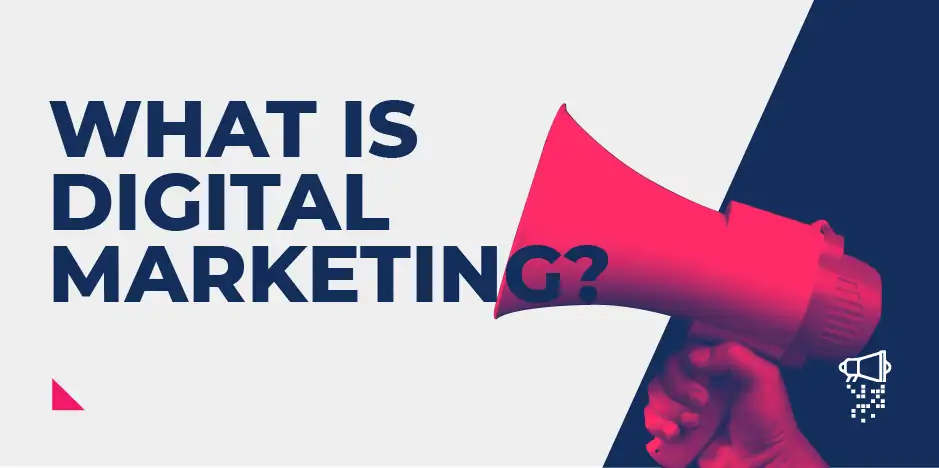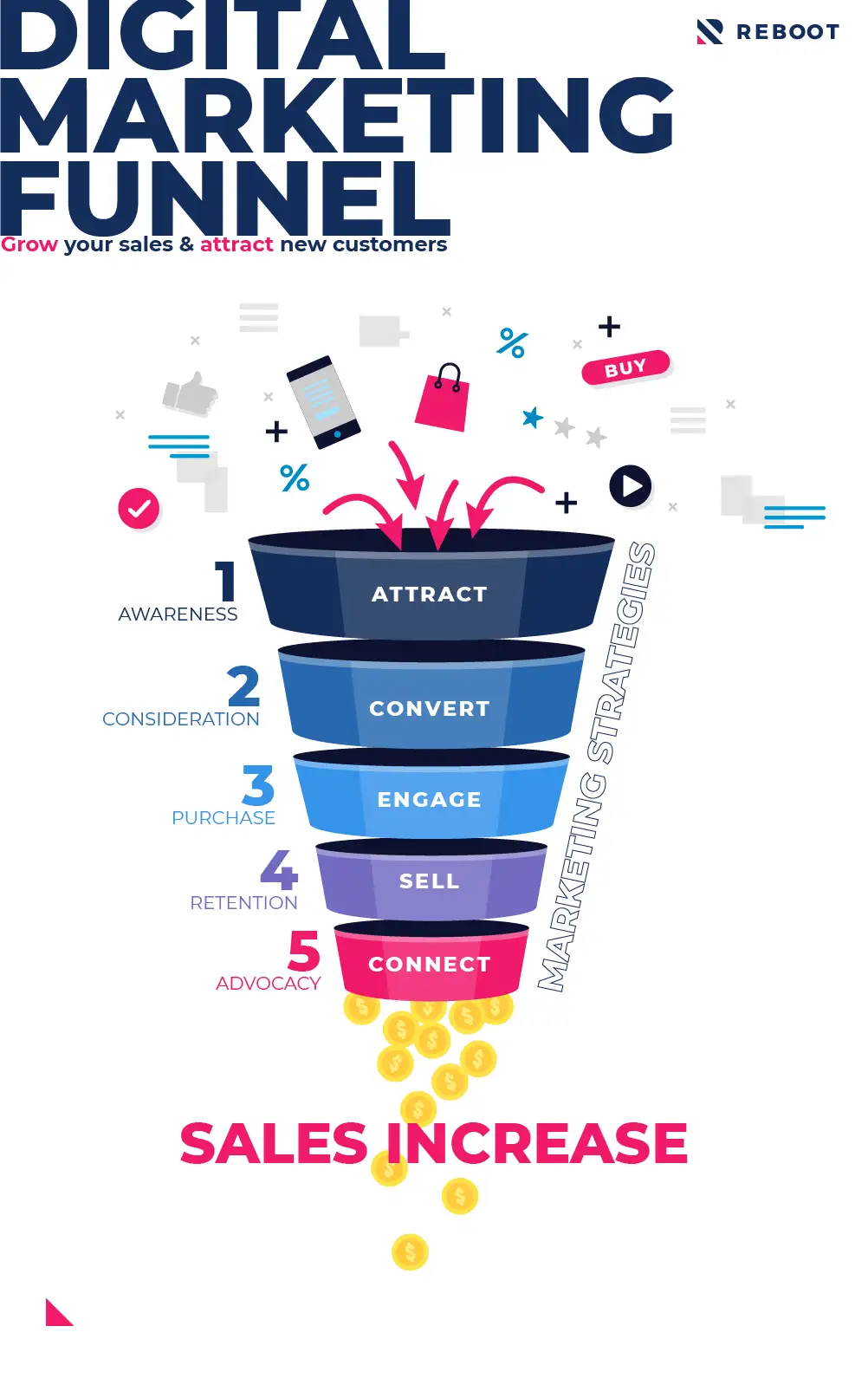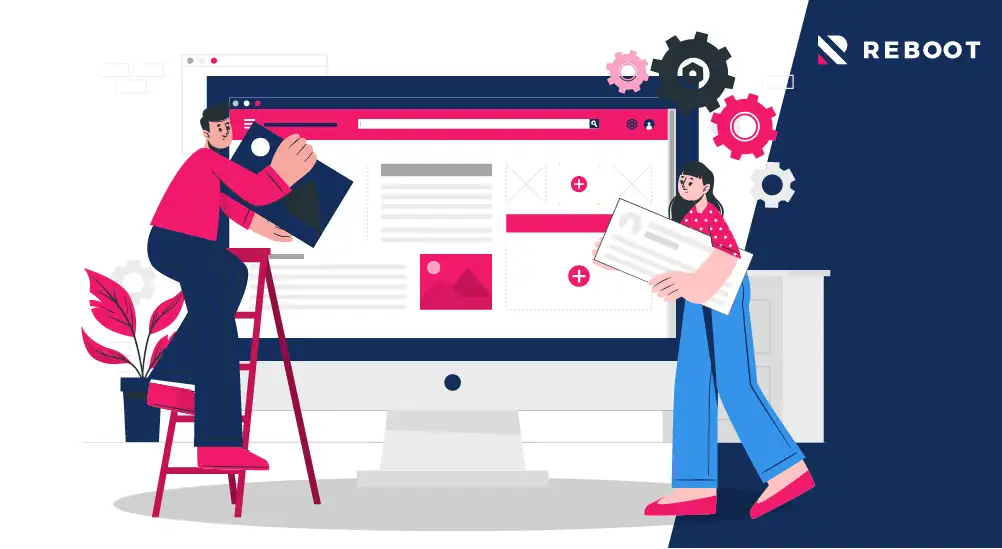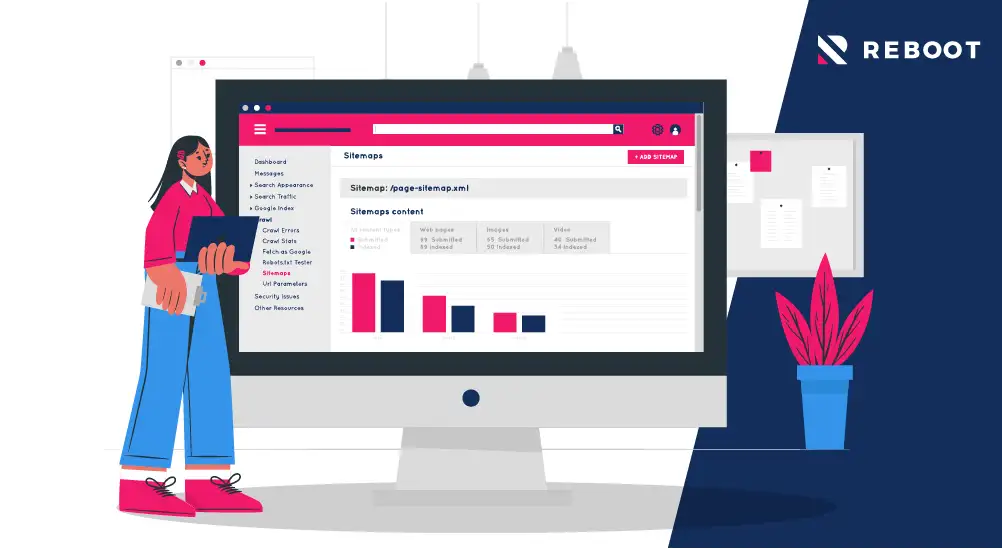
What is Digital Marketing?
As the digital sphere grows and becomes more saturated, brands are faced with further challenges of gaining a competitive edge. Geoff Cubitt, CEO of Isobar US, says that ‘companies that invest more in digital transformation outperform their peers over time’ as they are ‘better able to monetize new digital channels, and better able to build a bigger user base.’
So how can competing brands stand out from the crowd? We say: by using an intelligent digital marketing strategy that interprets a target audience’s preferences and tendencies before they do.
But what is digital marketing?
HOW DO WE DEFINE DIGITAL MARKETING?
While digital marketing means something different to everyone, we define it as the use of the internet, mobile devices, social media, search engines, and other channels to target a specific segment of a customer base. It’s any form of marketing that involves electronic devices and encompasses a massive network of digital touchpoints that consumers interact with numerous times a day.
Although digital marketing has been used interchangeably with ‘online marketing’ or ‘internet marketing,’ the difference is that internet marketing is advertising that is done solely on the internet, whereas digital marketing can take place through mobile devices, in a video game, or via a smartphone app.
If the definition seems straightforward, then why are so many brands failing to retain loyal customers?
COMMON MISCONCEPTIONS: Brands disregard the ‘Digital Marketing Funnel’

Smart Insights claim that most brands focus on the parts of the digital marketing that hails them a one-time customer and money intake, the focus is only towards the products/services provided instead of "a more holistic definition covering customer experiences." However, to ensure long-term success, every step of the process that a prospective buyer will take must be understood and targeted. This process is also known as the 'digital marketing funnel.'
Putting yourself into a potential buyer’s shoes will allow you to begin to understand their preferences and tendencies. This way, you can more carefully plan a technique or advertisement that will consistently satisfy the customer’s intent, and hopefully increase the number of people at the final stage of the funnel. The resulting effect is an established connection between the customer and the company, securing their loyalty.
Marketing has always been about targeting and connecting with audiences, and it’s no different for digital marketing. The key difference is that now, brands need to meet their audiences where they are. With over 4.6 billion internet users across the globe, it’s most likely that a target customer is online.
WHAT ARE THE DIFFERENT TYPES OF DIGITAL MARKETING?

Search Marketing
Search marketing is gaining audiences (traffic) and visibility for a brand via paid and unpaid techniques. Unpaid normally refers to Search Engine Optimisation (SEO), and paid is Pay-Per-Click (PPC).
Search Engine Optimisation (SEO)
SEO can be defined as improving a website to increase visibility on search engine results pages (SERPs). A well-thought-out strategy will see the quality and quantity of traffic increase as a site's ranking improves in the SERPs.
Some of the features essential to good SEO include:
Keyword optimisation - ensuring the search phrase is included throughout the content.
Link-building - linking to external sites, to pages within your website, and having other sites link to you improves your potential ranking This is referred to as digital PR.
Good content. This includes:
Relevant/useful content that answers queries.
Well-structured content that proves your company is an expert on a topic. An example of this is the pillar content strategy.
A variety of forms, including writing, images, videos and infographics.
On the impact of SEO on business, Oliver Sissons, Reboot's SEO Manager, explains that ‘the results of successful SEO campaigns can be exponential and allow a business to grow in a way that simply isn't possible via other marketing methods. Those ranking top for their target keyword(s) benefits from all the relevant, targeted organic traffic that this brings and will see increased sales or enquiries as a result.’
Content Marketing
The aim of content marketing is to reach potential customers through quality and engaging onsite content. This can be through multiple forms including eBooks, podcasts, radio, email and more! Effective content marketing educates and inspire targeted consumers and can secure a brand as a trustworthy hub of information over its competitors.
Our Content Strategy Manager, Abigail Cox, says ‘content marketing is a simple yet effective way to position your brand as an industry leader in the eyes of both customers and Google. It's not just about blog posts however, these days content marketing encompasses a whole host of elements to keep a potential customer engaged - think interactive visuals, videos and downloadable assets. Furthermore, a successful strategy will deliver content that highlights your expertise, authority and trustworthiness as a company within your sector, thus abiding by Google's E-A-T algorithm at the same time.’
Paid Search or Pay-Per-Click (PPC)
PPC refers to the sponsored result on the top side of a search engine results page (SERP). These ads charge you for every click and can be tailored to appear when specific terms are entered, so your ads are being targeted to audiences searching for something specific.
There are two ways in which PPC can be used:
To appear in the SERPs - a company will bid for a particular phrase they would like to advertise for. If they win, their advertisement will be shown at the top of the search results for that phrase, and they will pay for the number of times it is clicked on.
To appear on websites - their ads will be shown on various websites across the internet, adding to brand awareness and increasing the chances of a repeat customer. The ads are still pay-per-click, but these types are usually cheaper than normal PPC ads and have a higher click-through-rate (CTR).
Social Media Marketing (SMM)
Considering that after following a brand on social media, 91% of users visit their website, 89% will purchase from them and 85% are likely to recommend them to family and friends, what better place to showcase your brand to millions of people?
Many companies, especially SMEs, ask themselves "what is social media marketing?" and tend to avoid it due to misunderstanding its power as a digital marketing tool. Because social media is so prolific, it pays to combine social media elements into other areas of your marketing strategy.
Methods of social media marketing include:
Paid advertising – paid social media advertising can be used to target specific people’s timelines/feeds.
Organic advertising – posting content on your company’s social channels to an active and engaged audience.
Email Marketing
The quickest way to reach customers with important information, email marketing helps you connect with an already engaged audience. Whether it’s to sell products, share news or tell a story, email marketing is a proven way to increase ROI.
Mobile Marketing
We check our mobile devices constantly throughout the day. This makes marketing on mobile extremely important. For example, brands can reach customers on their devices through SMS messaging to send information about their latest promotions.
The second most popular search engine, millions of users will search on YouTube before they decide to by a product. Other video marketing platforms used to run video marketing campaigns include Facebook, Instagram and more recently, TikTok.
Enhanced Offline Marketing
Enhanced offline marketing is an integration of both digital and traditional methods of marketing. This multichannel marketing strategy is what many argue to be the best way to target customers effectively and creatively. It’s also more common than you might think. Some examples of include electronic billboards and digital product demos, such as phones in the Apple shop.
WHAT BENEFITS CAN BUSINESSES ACHIEVE THROUGH DIGITAL MARKETING?

Businesses can achieve powerful benefits through effective use of digital marketing methods including:
Low cost of entry: Certain aspects of digital marketing can be achieved with a small investment of time and resources.
Global reach: The internet is available to customers across the globe. This allows businesses to market and sell to customers far and wide.
Improved targeting: Digital marketing allows brands to target very specific demographics of potential customers. By engaging customers in a location, industry or social channel, brands have a much better chance of reaching their target demographic.
WHAT’S THE MOST IMPORTANT ADVICE TO TAKE AWAY?
While the most important aspects of digital marketing could be explored for days on end, what’s certain is that an online presence is necessary for any business and so digital marketing is essential to a successful business. Here are a few points that should be intrinsic to any brand’s approach:
Using a variety of digital mediums across a variety of devices to diversify interest and create a ubiquitous and dynamic brand.
Digital marketing trends are ever-changing - keeping up to date with what works and what doesn't.
Operating under the intention of retaining customers, and not just acquiring new ones that won’t return - the point of digital marketing is to think about the whole buyer journey.
This blog was originally written by Laura Solloway in 2018 and updated by Amina Maina in 2021.
